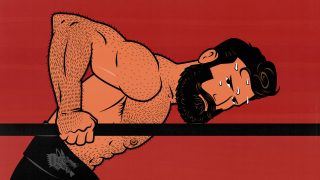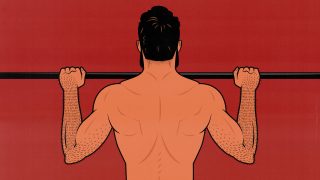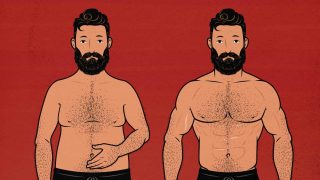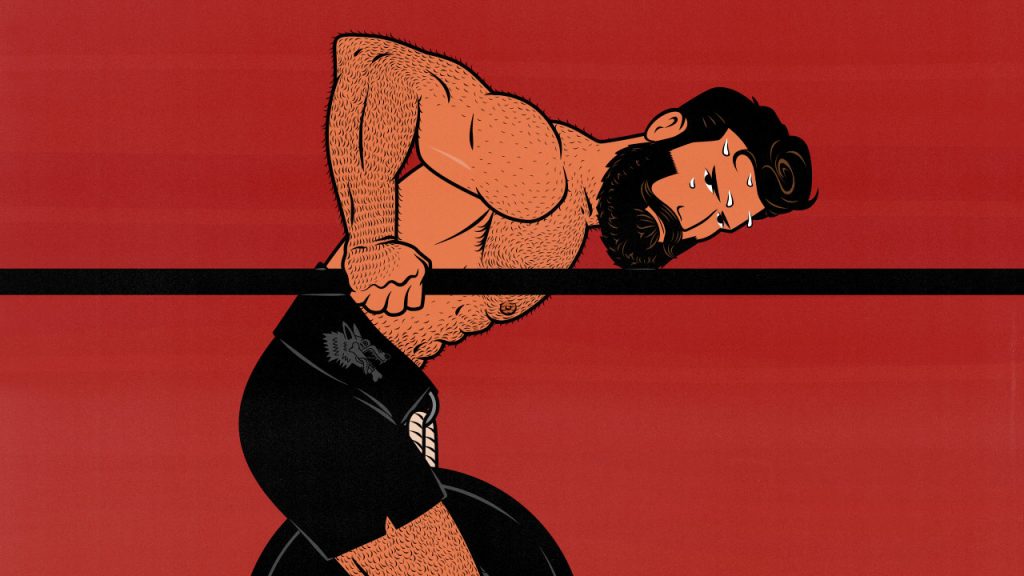
How to Do Dips (And Why They’re So Good)
Dips are one of the best exercises for building a bigger chest, and they’re one of the best muscle-building exercises overall. They’re an older exercise than the bench press, and they’ve helped build some of the most iconic physiques of all time, including Arnold Schwarzenegger’s, Vince Gironda’s, and Larry Scott’s. They’re even more popular with gymnasts and callisthenics athletes for their ability to build upper body strength and mobility.
Dips aren’t quite as popular with bodybuilders anymore, perhaps because people lost their ability to work their shoulders through a deep range of motion. Myths spread about them being bad for our shoulders, but the opposite is true: dips are one of the best ways to build stronger, more stable, and more flexible shoulders.
The trick is to ease your way into them gradually. I’ll show you how.
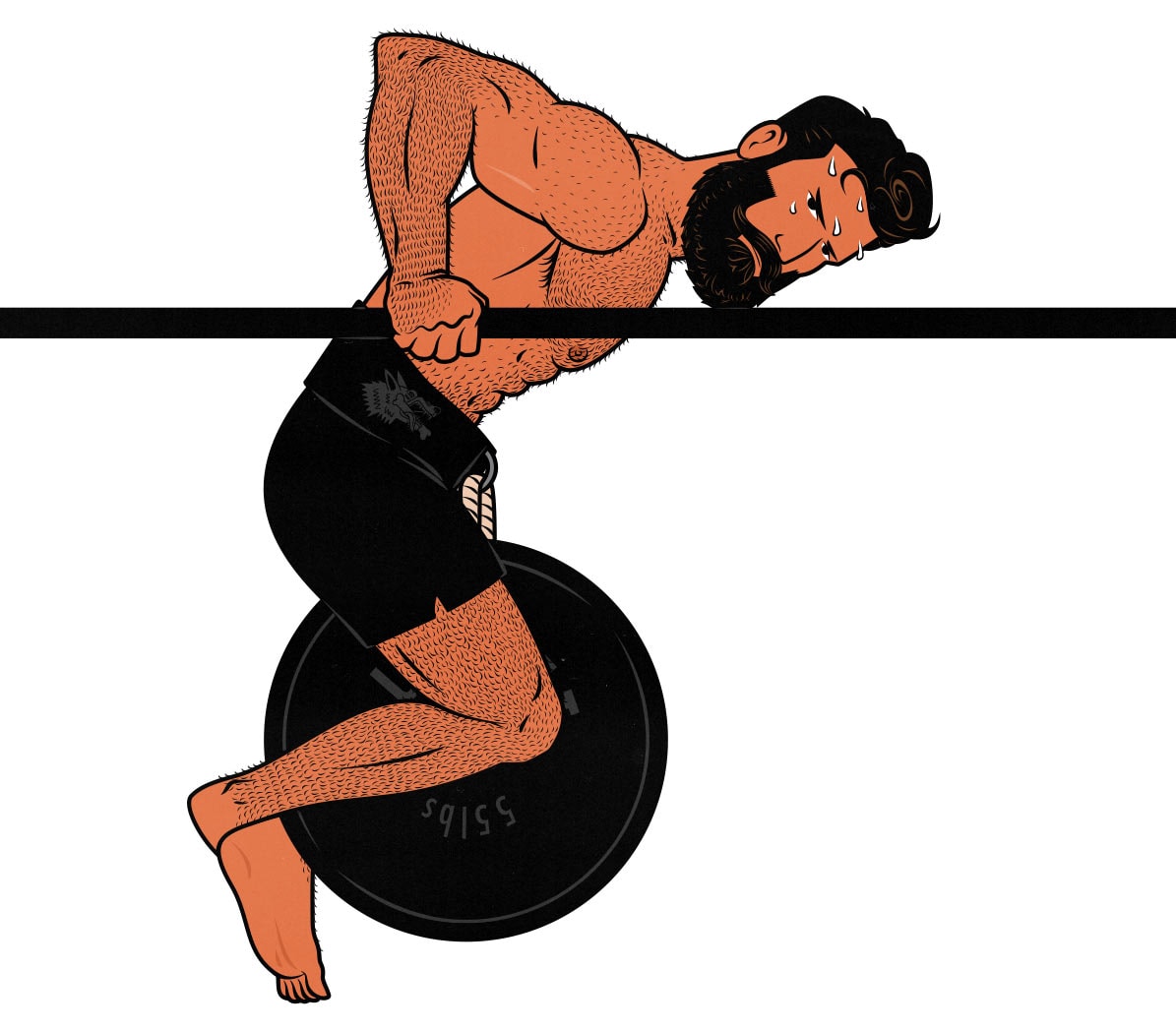
Muscles Worked
Some people do dips to work their triceps, and they can be good for that, but there’s some interference at the shoulder joint, preventing the long head from fully engaging. Thus, overhead triceps extensions and skull crushers are usually better triceps exercises.
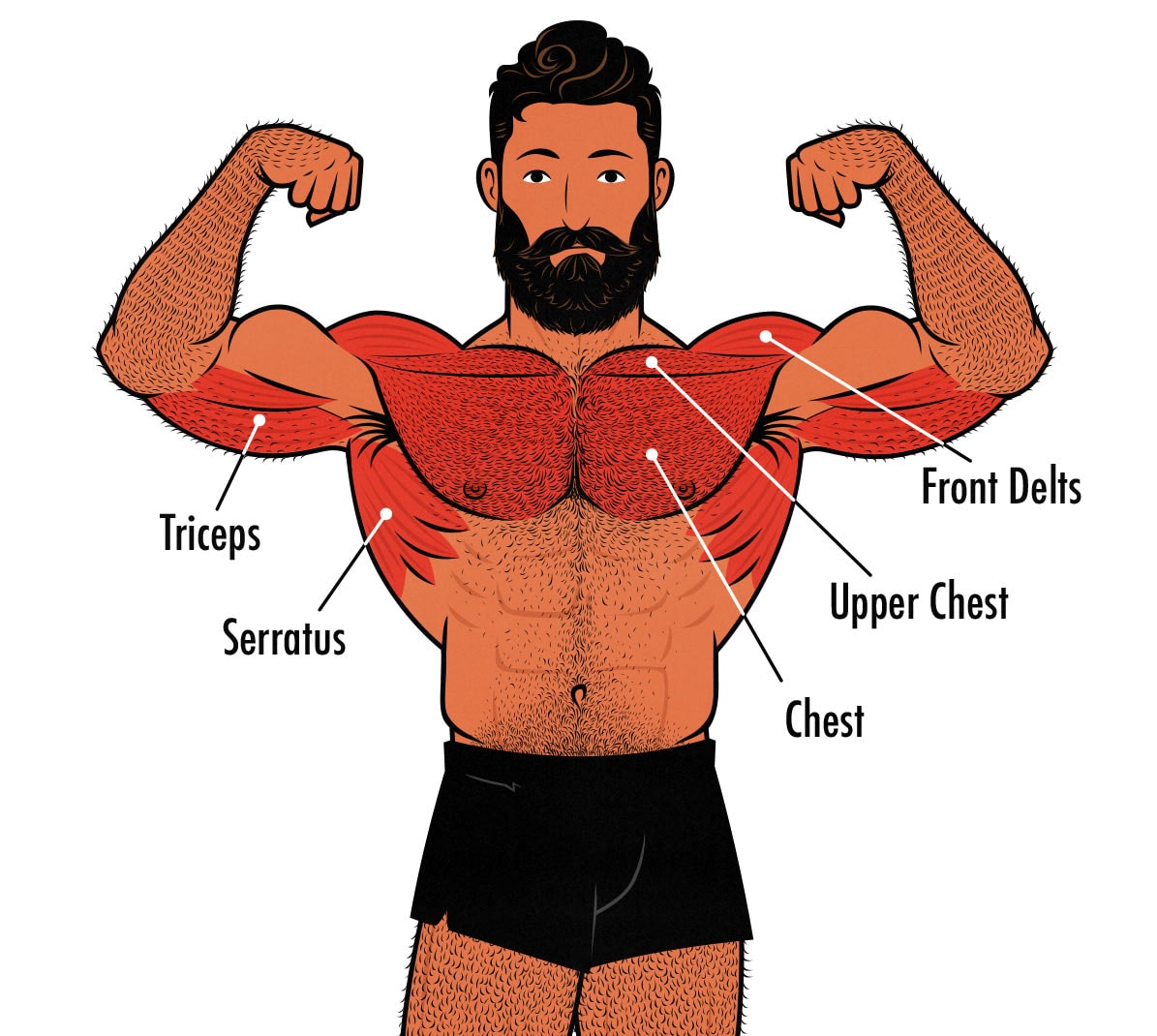
Dips are best for your chest (full explanation). They’re great for your mid-chest and even better for your lower chest. Your upper chest and front delts will work, too, but not as hard as during an incline bench press or overhead press. You can do an even better job of emphasizing your chest by leaning forward, almost like you’re doing a floating push-up.
Benefits
Dips work your pecs through a deeper range of motion than a standard bench press or push-ups, thus stimulating (probably) a little more chest growth.
Dips are also great for building stronger, healthier shoulder joints. They work your shoulders through the deepest possible range of motion, building strength there.
Also, since your shoulder blades aren’t pinned back against a bench, dips work your serratus anterior, which is great for building stronger, healthier shoulder joints.
How to Do Dips
The easiest way to teach you how to do dips is to show you. The less you need to think about it, the more naturally you’ll move. That’s why it’s so helpful to watch other people lift.
The best way to think of dips is as a progression to the push-up:
- Start with raised push-ups. If you raise your hands up on a bench, you need to lift 40–50% of your body weight, allowing you to get plenty of easy practice (full explanation).
- Advance to regular push-ups. These put about 65% of your weight on your hands. Keep practicing until you can do 10–20 repetitions in a row.
- Progress to deficit push-ups. Raise your hands up on parallettes, weight plates, or dumbbells, working your chest through a deeper range of motion.
- Raise your feet up. These put 70–75% of your body weight onto your hands, working your chest under a greater load.
- Bodyweight dips. Dips shift your entire body weight onto your hands, making them about 33% heavier than doing push-ups with your feet raised. They also work your chest under an even deeper stretch than deficit push-ups.
- Weighted dips. Once you can do 10–20 bodyweight dips, you can load weight plates onto a dip belt (or hold a dumbbell between your legs).
To do dips, hop up into the top position, lean forward to emphasize your chest, and lower yourself down under control. Once you have a deep stretch on your chest, explode back up as smoothly and athletically as you can.
You don’t need to overthink it. You already know how to do push-ups. Dips are the same movement, just with your feet floating in the air. Get a deep stretch on your pecs, then explode back up.
How to Program Dips
I like doing dips in a moderate rep range of around 6–12 reps per set, but anywhere up to 40 reps is good for building muscle. It’s just that the higher you go, the more painful it gets, making it harder to get close enough to failure (full explanation).
You need around 9–22 sets per muscle per week to maximize your rate of muscle growth (full explanation), but not all of those sets need to come from dips. You can do a mix of dips, bench presses, push-ups, chest presses, and flyes. Start with 9 total sets per week and work your way up. You’ll know it’s working if you’re getting stronger over time.
Your chest will grow fastest if you train it 2–4 times per week. That means you can do full-body workouts or body-part splits, training anywhere from 3–6 times per week:
For example, if you’re doing full-body workouts, you could do dips on Monday and Friday and incline bench presses on Wednesday. If you’re doing a push/pull/legs routine, do it twice per week, giving you two Push Days. Or, if you’re doing a Bro Split, you could do dips on Chest Day and incline bench presses on Shoulder Day.
If you want a periodized workout program built around the weighted dip, check out our Outlift intermediate hypertrophy program.



